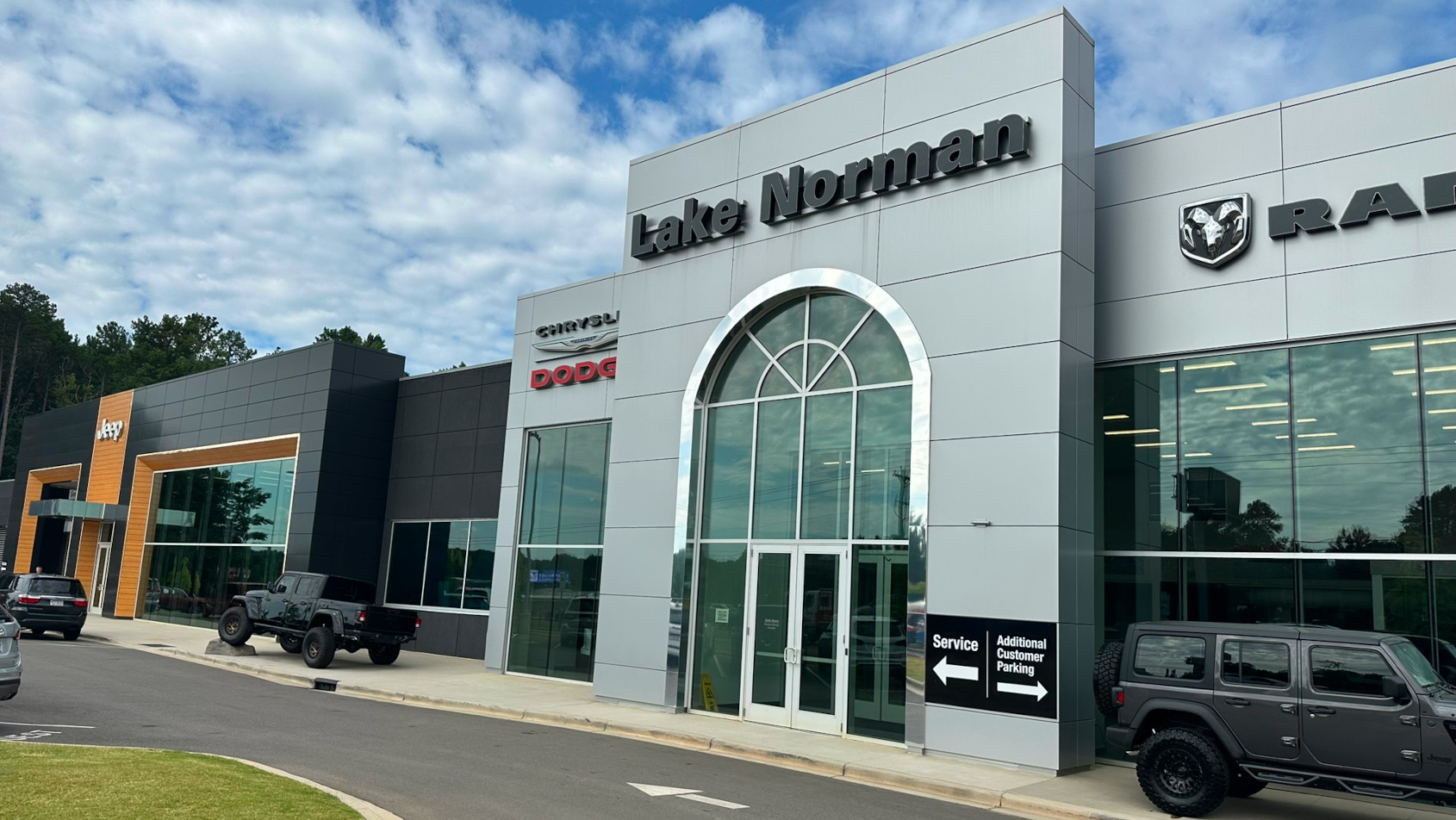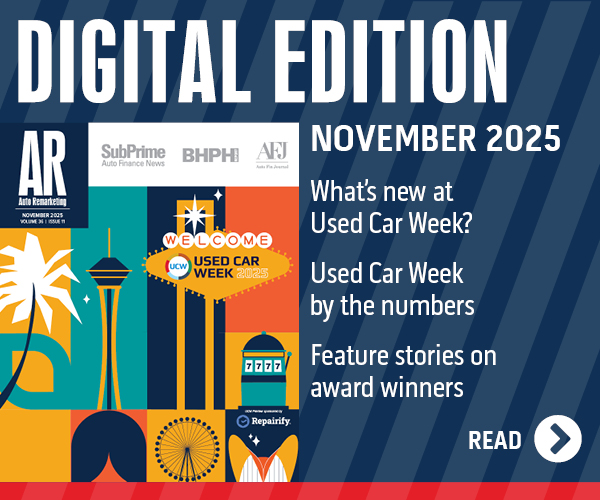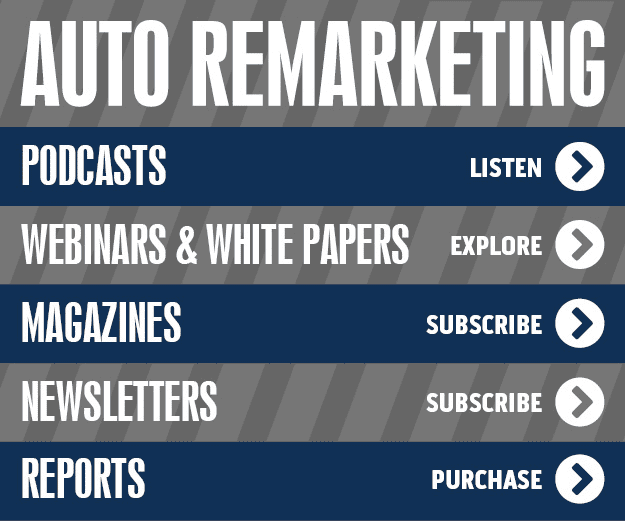2025 CPO Dealer of the Year: Lake Norman Chrysler Dodge Jeep Ram

Image courtesy of Lake Norman Chrysler Dodge Jeep Ram.
By subscribing, you agree to receive communications from Auto Remarketing and our partners in accordance with our Privacy Policy. We may share your information with select partners and sponsors who may contact you about their products and services. You may unsubscribe at any time.
Lake Norman Chrysler Dodge Jeep Ram has long been a successful dealership, but the Cornelius, N.C., store has shown particularly strong certified pre-owned growth in recent years.
When Parks Automotive Group acquired Lake Norman CDJR in 2023, the dealership was selling between 130-140 used vehicles each month, with roughly half being certified pre-owned.
Over the past year or so, says dealer operator Wesley McCullar, the store has ramped up its focus on used inventory stocking levels. It is now stocking 240 to 250 used cars, selling between 200 and 230 a month. And 170 to 180 of those are CPO, McCullar said.
Such growth has led to Lake Norman CDJR being selected as Cherokee Media Group’s 2025 CPO Dealer of the Year.
The dealership will be recognized during the Used Car Awards luncheon, presented by ATN, on Nov. 18 at Used Car Week.
UCW is being held at Red Rock in Las Vegas from Nov. 17-20.
Subscribe to Auto Remarketing to stay informed and stay ahead.
By subscribing, you agree to receive communications from Auto Remarketing and our partners in accordance with our Privacy Policy. We may share your information with select partners and sponsors who may contact you about their products and services. You may unsubscribe at any time.
McCullar and William Lafon, the store’s used-car director, will also participate on the “Best Practices from Best CPO Dealers” panel on Nov. 17 at Used Car Week.
Doubling down on used-car supply
Stellantis — the parent company of Chrysler, Dodge, Jeep and Ram brands — is among the automakers who have expanded their certified programs with tiers that include off-make, higher-mileage and/or older vehicles than what is typically found in traditional CPO programs.
That expansion at Stellantis “really gave us an opportunity to CPO pretty much everything we have in stock,” McCullar said, noting that upwards of 80% to 90% (or more) of their used-car inventory is CPO.
Lake Norman CDJR is leveraging the inclusion of off-make vehicles in CPO as well as keeping higher-mileage vehicles that make sense for the dealership, aren’t risky bets and can pass the 125-point inspection.
But doubling down on used-car inventory, particularly CPO, can be challenging in an environment where supply has been erratic and off-lease numbers have struggled.
“And that’s something that we also have battled. It’s been a huge focus of ours,” McCullar said. “Initially, as we grew the used-car footprint in our store, we leveraged the auctions heavily, much more heavily than I would like. And it certainly affected our overall profitability on the front end gross side of things.
“Now, fortunately for us, we have an incredibly strong F&I department that really kind of pulls us out of the grease on our losses on the front,” he said. “And we’ve got a really strong fixed operation. So, we have not been very profitable on the front of used cars, but holistically as an operation, it has proven to be very profitable.
“When you look at all the revenue streams that selling a car creates, it’s not just the front gross, it’s the doc fee, it’s the F&I, it’s the remit money from F&I products that goes to net asset income,” McCullar said. “It’s service & parts gross. There’s so many revenue streams that are attached to a car deal that you have to think from a super gross mindset.”
Building a car-buying team
The dealership shifted from what McCullar described as “over-leveraging the auction more than we would like to” to focusing on buying cars off the street.
“And I can proudly say that this year we finally gained some traction and I’ve built an internal in-house VBT, vehicle buying team,” he said.
The dealership’s VBT currently has two buyers with the goal of having four by the end of the year. Those teammates source vehicles from local consumers, primarily through Facebook Marketplace, McCullar said.
The team purchases more than 30 cars a month off the street and aims to get to 60, then eventually have four people each buying an average of 30-40 cars a month from consumers.
“If I can get four people, we’re buying (about) 120 used cars off the street, that’ll change the entire dynamic on the front-end gross side of things,” McCullar said.
“But through this process, I didn’t want to let that stop me from growing used cars. I think a lot of dealers, they get overly fixated or overly focused or concerned about front-end margin erosion that I think it prevents them from taking action,” he said. “And I think that’s a mistake. You’ve got to still move forward and realize all the revenue streams that you have that are ancillary to front-end gross and do a really good job maximizing that.”
Selling the value of CPO
When it comes to the actual sales process and interacting with the potential CPO customer, it’s critical to be able to explain the value of certified as well as the different iterations of the certified programs.
“First it starts with training,” McCullar said. “Salespeople have to be fully equipped with the knowledge of what each CPO vehicle comes with and what coverage it comes with — which they are.”
And the store has in-house training to make sure its staff are trained.
But today’s customer is much more decisive about the vehicle they want and come to the store with a choice in mind, McCullar said.
“The days of the customer coming on the lot and not having any clue what they want are long behind us. When a customer submits a lead or comes on your lot looking for a 2024 Grand Cherokee with 15,000 miles, they’ve done their research and they know why they’re looking for that. They’re looking for that because — typically it’s because they can’t afford a new one. This is the next best thing. And they also have researched the coverage that it comes with. And from a practicality standpoint, it makes the most sense to go CPO,” he said.
“But our salespeople are pretty good about selling the value of CPO and why CPO is the way to go,” he said. “It really makes it simple for us because pretty much everything on our lot’s CPO.”
A strong team behind him
With the expansion in the automaker’s CPO program tiers to include off-brand and higher-mileage/older vehicles, “we stock everything,” McCullar said.
And they take a Moneyball-esque approach to doing so.
“We are very data-driven,” he said. “We make all of our acquisition decisions based on the data, based on sales history, what we sell, cars that have a high trade probability.
“So, for example, if (there’s) a certain segment of vehicles we have a history of capturing a trade on, then that’s what our buying team specifically targets. We want to try to get a trade on anything that we sell,” McCullar said. “We’re very specific and we’re very data-driven behind all our acquisition decisions.”
The dealership is data-driven, but also team-driven. McCullar credits much of the store’s success to his team’s response to his vision. Like a coach setting the game plan and the players executing.
“I’ve always been very bullish on used cars. I came into this operation three years ago and cast a vision to my team. And one of my first missions … was to really grow used-car sales,” he said.
“And I don’t mean just grow it. I mean, pour some nitrous gas on it and really grow it. And, you know, I’m very blessed and fortunate to have a great team that just gets it,” McCullar said.
“I’ve got a team of highly skilled leaders. They’re not rookie entry-level managers by no means. They are true alpha dogs,” he said. “When it comes to the car business, they know what the hell we’re doing, which makes my job so much easier. I can cast a vision, provide them the resources, and then get the hell out of the way and let them execute. And they do a great job of that.”


